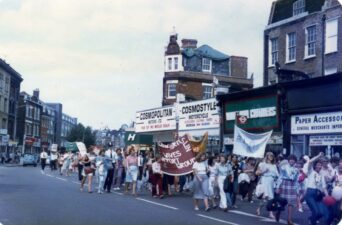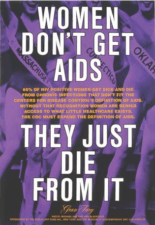Whilst researching for my recent dissertation, which focused on the career choices available to young women in post-war Britain, I came across a genre of books known as ‘career novels’ targeted at young female readers. The 1950s presented a unique situation for female school-leavers. A return to home-based domesticity was promoted by government and media sources, even though the number of women in paid employment was increasing. A growing acceptance of the ‘dual role’ which proposed that women could occupy a space at home and at work left a gap for careers advice for women which had previously not been needed. The career novels which proliferated in the post-war period give us one example of how publishing houses sought to capitalise on this confusion and reconcile how these two worlds of home and work should fit together for women.
These (often alliterative) books had titles such as Janet Carr, Journalist, Air Hostess Ann, and A Library Life for Deborah, depicting a specific career choice. Readers typically followed a young heroine as she left school, chose a career, and started her training or a job, before invariably ending the book either married or at the very least, engaged. Despite the variety of professions written about, the formulaic and repetitive nature of these books is one reason why these novels have been mostly forgotten about by academics. As well as lacking variety in structure, these novels also unsurprisingly lacked diversity in other areas, with most, if not all, of the heroines being white, middle-class, heterosexual, and able-bodied. What use then, are these books to a historian of women in the post-war period? As alluded to above, my (and others) interest in these novels is centred around how they contributed to and reflected contemporary conversations about a woman’s role in post-war society. Viewing these novels as historical sources, one question is whether these books show progression in encouraging young women into professions, or if the inevitable goal of marriage makes these books less of a breakthrough and more of a continuation of the status quo.
The very existence of these novels is one point firmly in the progress column as it shows there was a market and interest in encouraging young women into work. Furthermore, the specific terminology of ‘careers’ used in the advertising and publication of these books is significant. As is still the case today, the linguistic nuance of having a ‘career’ as opposed to a ‘job’ or ‘work’ contains gendered and value connotations with the term ‘career’ often being reserved for professional, typically masculine, educated jobs. Therefore, a publishing house’s decision to label their series as ‘career’ novels shows an initial step towards the de-gendering of the term. The professions advertised also give us some hope that the 1950s represented a time of expanding opportunities for young women. As well as teachers, nurses, and other typically feminine professions, books also existed in which the heroine wanted to be a doctor, an electrician, or a vet. Finally, while marriage or engagement featured heavily in the novels, some protagonists did not end their stories in a white dress but focused instead on their future in their chosen career.
However, books that featured newer or typically masculine professions and in which marriage did not feature were in the minority. Instead, the predominance of typically ‘feminine’ professions and the heavy-handed marriage subplot of most novels suggest a reluctance by publishers to fully champion the idea of a modern ‘career girl’. ‘Feminine’ jobs were those which were deemed acceptable for women, with two classic examples being teaching and nursing which many young women desiring a career in the early twentieth century found themselves encouraged into. The acceptability of these, and other ‘feminine’ jobs, was generally linked to the caring, child-related, or assistance nature of these roles which could be justified as natural extensions of the role of a wife and mother. Before discussions of a woman’s ‘dual role’ really took-off in the post-war period, the responsibilities associated with these professions show an earlier reconciliation of the spheres of home and work, as skills learned for one could be used in the other. The fact that teaching, nursing, and secretarial work were all deemed promotable careers by multiple publishing houses both reflected historical trends of female employment and emphasised a continued commitment to the idea of traditionally feminine careers. The few career novels published for boys clearly defined what was not a career for girls. These promoted typically ‘masculine’ careers such as building or engineering, for which no female equivalents existed, highlighting a continued demarcation of careers based on gender.
The novels have also been criticised as promoting the ‘stop gap’ attitude towards female employment in which a young woman would only work until marriage, at which point she would be willing to give it up to become a full-time housewife and mother. On the surface, it is easy to understand these criticisms given that many of the books culminate in engagement or marriage, however, a closer look shows how some authors sought to undermine the stopgap attitude. Firstly, while eventual marriage was expected, work was presented as something to be enjoyed and taken seriously. The heroines were not merely filling their time by working but were depicted actively choosing and pursuing their interests. Furthermore, some books broached the subject of working after marriage, reflecting a real-life shift in the demographic of the employment market of an increase in older married women. The desire to train so that work could be continued after marriage was therefore one of the ways career novels sought to reconcile the division between the traditionally mutually exclusive spheres of home and work. However, keen-eyed readers will notice that while this was sometimes suggested as the perfect solution, the novels rarely gave practical advice on how a woman might combine a career with marriage. More than once, fictional husbands were posted overseas or given illnesses rather than deal with the sticky situation of a woman having to fulfil her wifely duties while she continued her career.
A cursory glance at some of the ways in which these novels navigated girls’ choices indicates the complex balancing act which women were facing. Viewing these career novels as either a sign of expanding career opportunities for women or purely romance novels disguised as careers advice fails to recognise the contradictory messages which women in the 1950s were facing. This is not to say that the books themselves are nuanced stories with complex characters (they are not), but that as historical sources, they are a valuable reflection of a society that was conflicted about how to advise their young women.
Megan Stuart is a recent undergraduate from the University of Durham. This blog represents a small section of the research she undertook for her dissertation entitled: ‘Careers for Girls? The Contradictory Nature of ‘Career’ as Presented to Girls in 1950s Britain’, which was Highly Commended by WHN. She would also like to extend her thanks to Kay Clifford for her continued enthusiasm for girls’ career novels.

